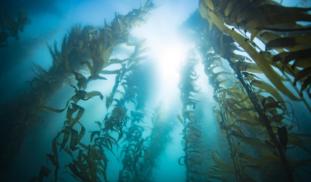Please wait...
About This Project
Kelp forests are a prominent feature along the world’s coastlines in temperate and subpolar regions. However, increasing ocean temperatures are threatening the persistence of these highly productive ecosystems. We propose to develop a new method to estimate the density of kelp forests using underwater sound. If successful, this rapid, acoustic-based assessment method could enable the continuous monitoring of the health of these brown macroalgae in the face of climate change.

Browse Other Projects on Experiment
Related Projects
Real-time underwater fish identification and biomonitoring via machine learning-based compression of video to text
Underwater monitoring of marine life has traditionally followed a "set it and retrieve it” approach due...
Combining eDNA & Biologging Technologies to Capture Deep-Sea Predatory Interactions Between Whales & Prey
We aim to combine eDNA sampling and biologging to study predator-prey interactions in the deep sea in real...
Can A Low-Cost Camera & Loitering Guard Better Monitor Marine Protected Areas?
Marine Protected Areas (MPAs) are difficult to enforce due to their remoteness and often invisible borders...




